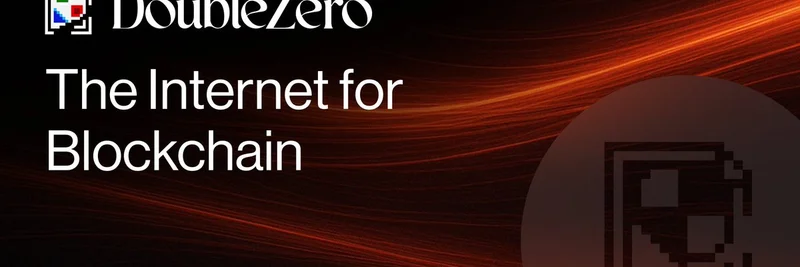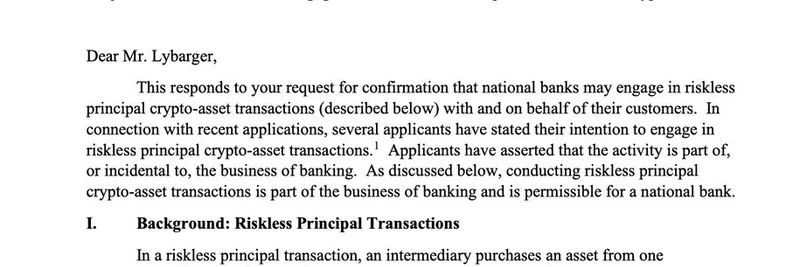In the fast-paced world of blockchain, where meme tokens on Solana can skyrocket or plummet in seconds, speed is everything. That's why the recent thread from Luganodes caught our eye at Meme Insider. They're diving deep into DoubleZero, a groundbreaking project that's essentially building a new internet tailored for blockchain, AI, and distributed computing. If you're into meme tokens, this could mean quicker trades, fewer missed opportunities, and a smoother ride on Solana's wild waves.
Luganodes, a top-tier blockchain infrastructure provider, kicked off the thread by explaining how our current internet setups are getting tweaks, but software alone isn't cutting it anymore. DoubleZero is rethinking the fundamentals—the lower layers of the OSI model (that's the Open Systems Interconnection model, a blueprint for how networks communicate)—to create a supercharged environment for blockchains like Solana.
Laying the Foundation: Physical Connectivity
It all begins at the physical layer. Think undersea cables, terrestrial fiber optics, and even satellite links. DoubleZero taps into spare capacity from ISPs, data centers, and enterprises, all under strict service level agreements (SLAs) for bandwidth, latency, and maximum transmission unit (MTU). This creates a high-speed private network that's the backbone for everything else. For meme token enthusiasts, this means the underlying pipes for Solana transactions could get a massive upgrade, reducing delays that often kill the momentum in a pump.
Edge Protection: The Filter Ring
Before data hits the core network, it goes through DoubleZero's "Filter Ring." This is edge hardware using field-programmable gate arrays (FPGAs) to scrub out spam, duplicates, and DDoS attacks while verifying signatures. Validators—like those run by Luganodes—don't have to waste CPU power on this grunt work anymore. They can focus on producing blocks and reaching consensus. In simple terms, it's like having a bouncer at the door of your favorite club, ensuring only legit traffic gets in. For Solana's meme token scene, where bots and spam can flood the network during hype launches, this filtration could keep things running smoothly.
The Heart of the System: Execution Ring
Once cleared, high-priority traffic enters the "Execution Ring," a mesh of dedicated fiber links optimized for low latency and high bandwidth. It uses explicit routing, prioritization, and multicast to zip blocks, shreds (Solana's way of breaking data into smaller pieces), and state updates around. The goal? Minimal jitter (that's variability in delay) and predictable performance. Imagine trading a hot new meme token without those frustrating lags—DoubleZero aims to make that a reality by pushing Solana closer to its theoretical speed limits.
Smart Orchestration and Protocols
Overseeing it all is a smart contract-based controller that maps the network in real-time. It monitors SLAs, matches supply with demand, and handles pricing for premium routes. Good performers get rewards; slackers get penalized. This decentralized brain ensures the network stays efficient and fair. It's permissionless too, meaning anyone can contribute capacity and earn from it, much like staking in a meme token pool but for physical infra.
Applications and Services
DoubleZero isn't just for blockchains—it's versatile. It supports layer-1 and layer-2 networks, RPC nodes (remote procedure calls, the gateways for apps to interact with the chain), indexers, and even non-crypto uses like gaming or AI training. Core perks include lightning-fast consensus, efficient data sync, and robust RPCs. For meme token projects on Solana, this could translate to better DEX performance, quicker oracle updates for price feeds, and overall ecosystem growth.
The Bigger Picture: Impact and Economics
The mantra here is #IBRL—Increase Bandwidth, Reduce Latency. Benefits include higher throughput, less jitter, fewer missed slots (when validators fail to produce blocks on time), and lighter CPU loads. Economically, it turns idle fiber into cash, ditching long telco contracts for a dynamic, permissionless model. This "N1" infrastructure (think top-tier networking) could democratize high-performance computing, making it easier for meme token devs in remote areas to run nodes without breaking the bank.
Validators like Luganodes are both users and enablers. They get pre-filtered traffic, dedicated links for faster consensus, and the option to contribute capacity for rewards. Luganodes is already live on Solana with DoubleZero, participating in their Delegation Program. Check out their full blog post for more details: Luganodes の DoubleZero に関する記事.
Why This Matters for Meme Tokens
Solana has become the go-to chain for meme tokens thanks to its speed and low fees, but as adoption grows—with projects like Pump.fun launching thousands of tokens—network congestion can be a buzzkill. DoubleZero's DePIN approach (Decentralized Physical Infrastructure Network) could supercharge Solana, enabling even wilder meme seasons. Founded by Austin Federa, formerly of the Solana Foundation, it's already connecting 142 nodes with 3.29% of staked SOL. They've even launched a massive 3 million SOL stake pool to expand the network.
If you're building or trading meme tokens, keep an eye on DoubleZero. It might just be the upgrade that takes Solana's meme ecosystem to the next level, making those viral pumps even more explosive. For more on emerging tech in the meme space, stick with Meme Insider.




